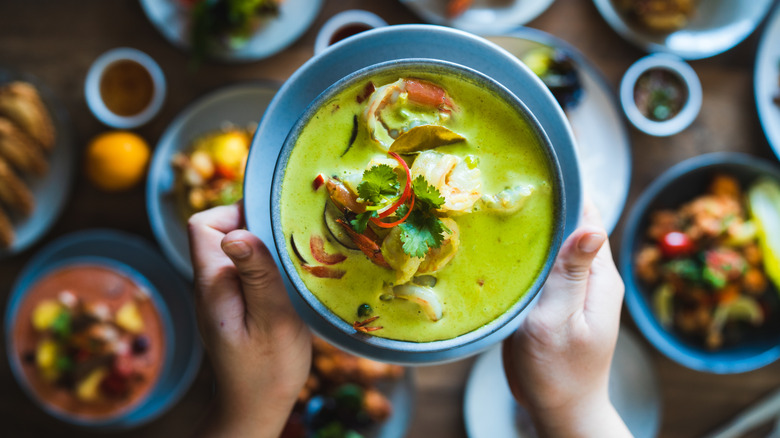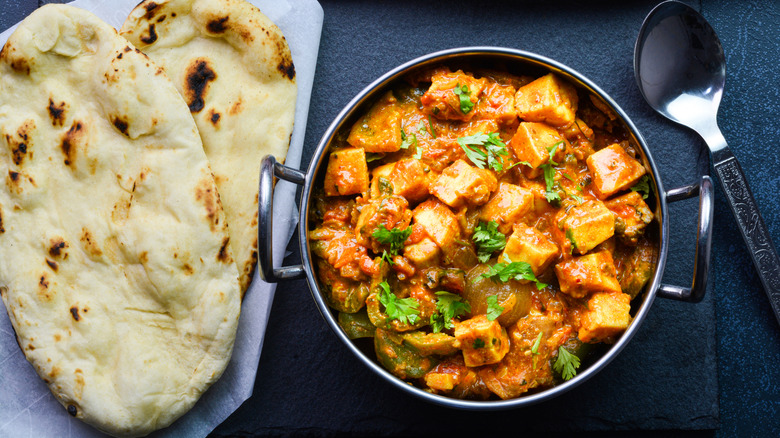Thai Vs Indian Curries: What's The Actual Difference?
Curries are chock full of bold flavors and aromatic spices. They can use a variety of proteins, from meaty chicken to vegetarian or vegan sources like tofu. The term "curry" comes from the Tamil word kahri, which is used to describe a sauce eaten over rice. While most people associate curry with southeast Asia, there are distinct varieties from India and Thailand that have their own unique characteristics to set them apart from one another.
The key difference between Thai and Indian curries lies in their ingredients. Thai curries usually have a base consisting of coconut milk (or even silken tofu for another dairy-free option), and a curry paste, which is a mixture of dry spices and fresh ingredients like oil, shrimp paste, lime juice, garlic, chili peppers, lemon grass, Thai basil, kaffir lime leaves, and galangal. In the world of Thai curries, there are three main types of curry paste: red, yellow, and green. Their colors are based on the ingredients used in the curry paste. For example, a red curry utilizes various types of dried red chili peppers. Spices like turmeric give yellow curries their bright golden shade, and green curries look fresh and vibrant thanks to the presence of kaffir lime leaves or Thai basil.
Using coconut milk as a base makes Thai curries have a creamy, cooling effect (which can be relieving if the curry paste involves an extra hot chili pepper) and the fresh herbs lend an aromatic brightness to the dish. While you can customize your curry to include anything you like, Thai curries are more likely to feature tofu or seafood alongside vegetables such as bell peppers or bamboo shoots.
What is an Indian curry?
Indian curries, on the other hand, are typically started by cooking onions, ginger, and garlic in hot oil or ghee (a type of clarified butter you can make for yourself at home). Then, a mix of key Indian spices are incorporated, which usually consists of cumin, mustard seeds, garam masala, coriander, cinnamon, and turmeric. Indian curries are often tomato-based, but sometimes incorporate yogurt for a hint of creaminess. While Indian curries can certainly feature seafood or tofu like a Thai curry, they more commonly incorporate proteins like chicken, lamb, and goat. Lentils, chickpeas, and paneer (an Indian cheese) are also popular choices, alongside vegetables like okra and potatoes. Indian curries also often use curry leaves, which are an aromatic addition with a bright flavor that tastes similar to lemongrass.
Indian curries tend to have a thick, stew-like consistency, whereas Thai curries are soupier and broth-like. This is because the vegetables in Indian curries are more finely chopped than the bigger chunks that are added to a Thai curry, and therefore acts as a thickening agent. Also contributing to the consistency differences is cook time. Indian curries thicken because they are stewed for longer, and Thai curries keep their broth-like consistency because they are quickly thrown together. Whether you love both types of curries or prefer one over the other, both have complex flavors that make a delicious and satisfying meal.

